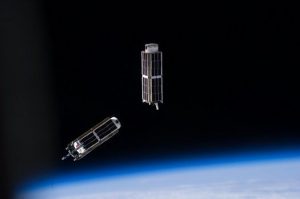The goal of planetary protection is to control, to the degree possible, the biological cross-contamination of planetary bodies.
A recently released National Academies of Science (NAS) report — Assessment of the Report of NASA’s Planetary Protection Independent Review Board (2020) – took a hard look at the observations of a NASA-charted Planetary Protection Independent Review Board (PPIRB).
The new Academies report flagged several areas of concern, such as commercial and private groups exploring and utilizing Mars. There is need, the report notes, “to clarify the legal and regulatory framework applicable to private-sector space activities that implicate planetary protection.”
Wanted: standard template
One of the report’s recommendations is that NASA should undertake the following actions:
- Develop a broad-based, representative advisory process to inform the development of planetary protection policy for small, low-cost spacecraft;
- Identify, fund, and complete research and development priorities related to small, low-cost spacecraft (e.g., on analyzing base costs for planetary protection compliance and on crafting a standard planetary protection template);
- Clarify the legal and regulatory environment for small, low-cost spacecraft used in missions that are not subject to agreements or contracts with NASA; and
- Record, analyze, and communicate the lessons learned from specific small, low-cost spacecraft missions in order to inform the development and implementation of the new approach to planetary protection policy.
Legal and regulatory guide
NASA should work with other agencies of the U.S. government, especially the Federal Aviation Administration, the new reports explains, to produce a legal and regulatory guide for private-sector actors planning space activities that implicate planetary protection but that do not involve NASA participation.
The guide should clearly identify where legal authority for making decisions about planetary protection issues resides, how the United States translates its obligations under the United Nations Outer Space Treaty into planetary protection requirements for non-governmental missions, what legal rules apply to private-sector actors planning missions with planetary protection issues, and what authoritative sources of information are available to private-sector actors that want more guidance on legal and regulatory questions.

Israel’s Beresheet lunar lander imagery taken before crash landing on April 11, 2019.
Credit: SpaceIL and Israel Aerospace Industries (IAI)
Bad-boy Beresheet
Spotlighted both in the new Academies report and by the (PPIRB) is Israel’s Beresheet lunar mission.
Built by SpaceIL, an Israeli nonprofit organization, and launched by SpaceX, this commercial lunar lander that subsequently crashed on the Moon, carried a variety of payloads, including a laser retroreflector experiment supplied by NASA via an agreement with the Israeli Space Agency.
However, unbeknownst to SpaceIL, SpaceX, or NASA (which also provided tracking and communications support), another payload aboard Beresheet contained undisclosed organisms and, possibly, other biological materials.

A scanning electron micrograph of an adult tardigrade (Hypsibius dujardini). Credit: Willow Gabriel, Goldstein lab, University of North Carolina at Chapel Hill
As such, this was a clear case of a payload owner not providing the launch operator or NASA with full information about the payload’s biological content. The Academies report addresses the implications of the SpaceIL incident “because the incident connects to persistent questions about the legal authority and rules applicable to private sector space activities conducted with or without NASA participation that implicate planetary protection.”
Problems persist
A finding of the new report: “Problems persist with whether and how U.S. federal law regulates private-sector space activities for planetary protection purposes concerning launch, on-orbit, and re-entry activities.”
These problems create challenges for U.S. compliance with the United Nations Outer Space Treaty’s obligations concerning the authorization and continual supervision of activities of non-governmental entities “and also undermine the private sector’s need for a transparent and efficient legal and regulatory framework to support expanding of private sector exploration and uses of space,” the report adds.
Humans to Mars
Regarding the human exploration of Mars, the report explains that, although NASA recognizes that existing planetary protection policy is inappropriate for human missions to Mars, “it has not developed a strategy for producing practical planetary protection measures for such human missions. The lack of a strategy stems, in large measure, from the fact that NASA has not conducted the research and development needed to build the scientific and technological foundation for planetary protection measures designed specifically for human missions to Mars.”
The new report recommends that NASA should make the development and execution of a strategy to guide the adoption of planetary protection policy for human missions to Mars a priority.
Independent advisory body
Furthermore, the report recommends that NASA should establish a new, permanent, and independent advisory body formally authorized to provide NASA with information and formulate advice from representatives of the full range of stakeholders relevant to, or affected by, planetary protection policy.
To read the full report — Assessment of the Report of NASA’s Planetary Protection Independent Review Board — go to:





